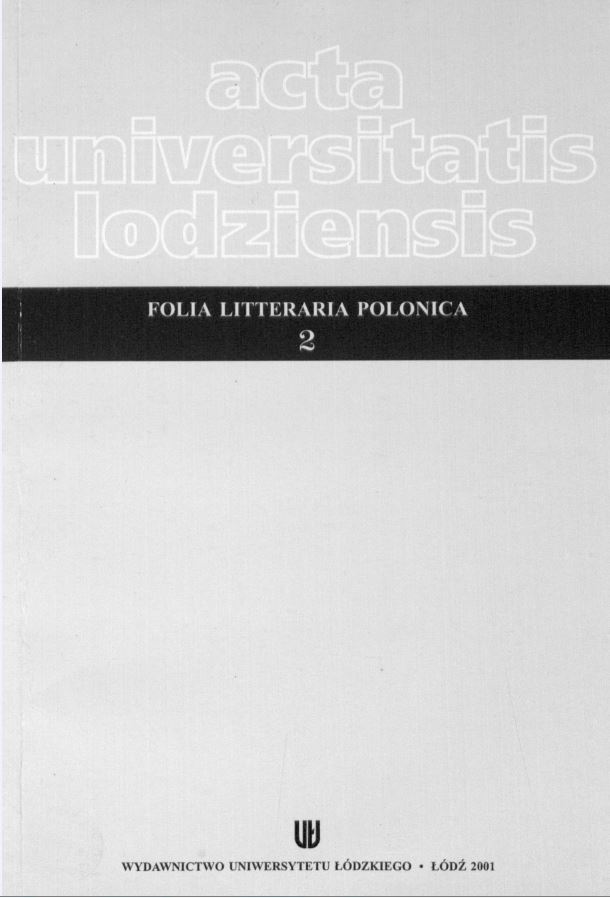Kicz i parodia w prozie Manueli Gretkowskiej : czym jest; jak jest; po co jest?
DOI:
https://doi.org/10.18778/1505-9057.02.10Słowa kluczowe:
kicz, parodia literacka, Manuela Gretkowska, Camp-art, postmodernizmAbstrakt
The article is an attempt to outline a long-neglected issue and relate a general category, usually placed outside the achievements of “traditional” art, to stricte literary phenomena. The first chapter, Na tropach kiczu (On the trail of trash), concentrates on establishing the range of meaning of the term discussed. It is not aimed at constructing an unambiguous definition but at producing a brief outline of the complex character of the issue. The author does not limit herself to a negative understanding of the phenomenon, but also emphasizes its multi-aspect presence in widely termed culture. The second chapter, О kiczu literaturze (On trash in literature), deals with the general ways in which the phenomenon functions and the ways of revealing the phenomenon in literary works and discusses various manifestations of the problem in particular texts. It presents instances of plain trash as well as pieces of writing where trash appears at the level of the world presented and where it is often subject to all sorts of tricks and many kinds of mystification. Chapter third, entitled Kicz opisany i sparodiowany: proza Manueli Gretkowskiej (Trash described and parodied: the prose by Manuela Gretkowska), is directly connected with the issues raised in the title of the article. The subjecl of this part of the publication is the literary output of this contemporary Polish writer, particularly her first three novels: My zdies' emigranty [1992], Tarot paryski (The Paris Tarot) [1993] and Kabaret Metafizyczny (Metaphysical Cabaret) [1994]. However, the aim of this chapter is not to characterize the novels but to comprehensively present the issue of trash in actual practice; that is, to give examples of the problems briefly discussed above. In the prose trash manifests itself at various levels of meaning and is subject to parody, the aim of which is not only to discredit or mock the phenomenon, but also to reach its essence and reveal its unique mechanisms. In the texts discussed here trash seems to lead to parody and parody to trash, which means that both the categories are closely and inseparably linked with each other. This is especially visible at the level of the strategy of reception, which is part ol the novels. The issue is discussed in the fourth chapter, entitled Gdzie jest czytelnik, gdy go nie ma? Strategia odbioru według Manuell Gretkowskiej (Where is the reader when there is no reader? The strategy of reception by Manuela Gretkowska). The last chapter, with the title Wokół postmodernizmu (On postmodernism), is an attempt to summarize the above issues and place them in a wider context. It presents the three novels against a background of the achievements of contemporary literature and art, which are usually regarded as postmodernist, makes them part of aesthetics, using a specific sort of style called camp-art by Susan Sontag, which consists in deliberate staggering on the borderland between bad and good tastes, an apotheosis of exaggeration as well as exhibiting trash perceived as a cultural element, a symptom of “new sensitivity” and an absolutely ambiguous phenomenon.
Pobrania
Pobrania
Opublikowane
Jak cytować
Numer
Dział
Licencja

Utwór dostępny jest na licencji Creative Commons Uznanie autorstwa – Użycie niekomercyjne – Bez utworów zależnych 4.0 Międzynarodowe.











